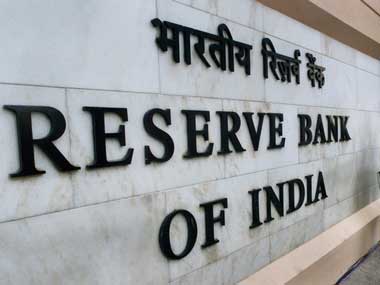A Reserve Bank of India (RBI) committee headed by Union Bank of India Chairman MV Nair has suggested a revamp of priority lending norms to ensure a greater flow of credit to small and marginal farmers and to micro enterprises by calling for sub-targets for lending to these segments.
This suggestion means that banks will now have to lend more to those constituencies whose loans were written off in the 2008 budget. In that budget, then Finance Minister P Chidambaram had written off Rs 60,000 crore (later raised to Rs 72,000 crore) to over 37 million small and marginal farmers, among others.
[caption id=“attachment_220643” align=“alignright” width=“380” caption=“Though banks were compensated for the loss, the write-offs worsened the climate for loan repayments among farmers. Reuters”]  [/caption]
Though banks were compensated for the loss, the write-offs worsened the climate for loan repayments among farmers. A Macquarie report last November warned that the agriculture sector’s bad loans have gone up by 150 percent in the past two years. The ratio of bad loans to the total loan book has increased from 1.9 percent in financial year 2009 to 3.5 percent in 2011 for the public sector banking sector.
The committee report with push banks to go the whole hog again in lending to small and marginal farmers.
The Nair committee, whose report and recommendations were put in the public domain by the RBI on Tuesday, has suggested that the overall priority lending target be maintained at 40 percent - and this should be applicable both to Indian banks and foreign ones.
In the agriculture lending target of 18 percent, the committee said half the amount must be earmarked for small and marginal farmers. As for lending to medium and small enterprises, the committee recommended that it should be retained under priority sector lending, but a separate 7 percent target should be set for loans to micro enterprises.
Impact Shorts
More ShortsThe committee was formed in August last year to re-examine the existing classification and suggest revised guidelines with regard to priority sector lending and related issues. Here are some of the other major recommendations:
For foreign banks, the target will be increased to 40 percent; 15 percent of this must go to small and marginal enterprises, 15 percent to exports and 7 percent within this to micro enterprises.
There will be no distinction between direct and indirect lending to agriculture sector. The 9 percent target for lending to small and marginal farmers has to be achieved by 2015-16.
In the case of marginal and small enterprises, the 7 percent sub-target for micro enterprises has to be achieved by 2013-14. Banks might be encouraged to see that the accounts under this sector grow at 15 percent annually.
Housing and education loans may continue to be under priority sector. When loans are sanctioned for buying one house per head up to Rs 25 lakh, upto Rs 2 lakh in rural and semi-urban areas and upto Rs 5 lakh in other centres, it can be under priority lending.
Housing loans for low income groups or economically weaker sections, or any priority sector lending to women, will be included under the weaker sections category.
The limit under priority sector for loans for studies in India may be increased to Rs 15 lakh and Rs 25 lakh in case of studies abroad, from existing limits of Rs 10 lakh and Rs 20 lakh, respectively.
Bank loans to certain NBFCs for lending to some specific areas may be considered as priority sector lending. But this has to be decided after proper due diligence and must be capped at 5 percent of total credit.
The recommendations are clearly aimed at better financial inclusion over a period of time, especially by putting targets for lending to marginal farmers and micro enterprises. However, it is worth noting that agricultural bad loans have been a major cause of worry for banks like SBI. The bank’s Chairman Pratip Chaudhury says it is a “ moral hazard issue” due to the writeoffs in 2008.
For a sector that is already stressed due to exposure to sectors like aviation, textiles, telecom, real estate, power, etc, setting higher targets for certain priority sectors might add to the woes.


)

)
)
)
)
)
)
)
)



